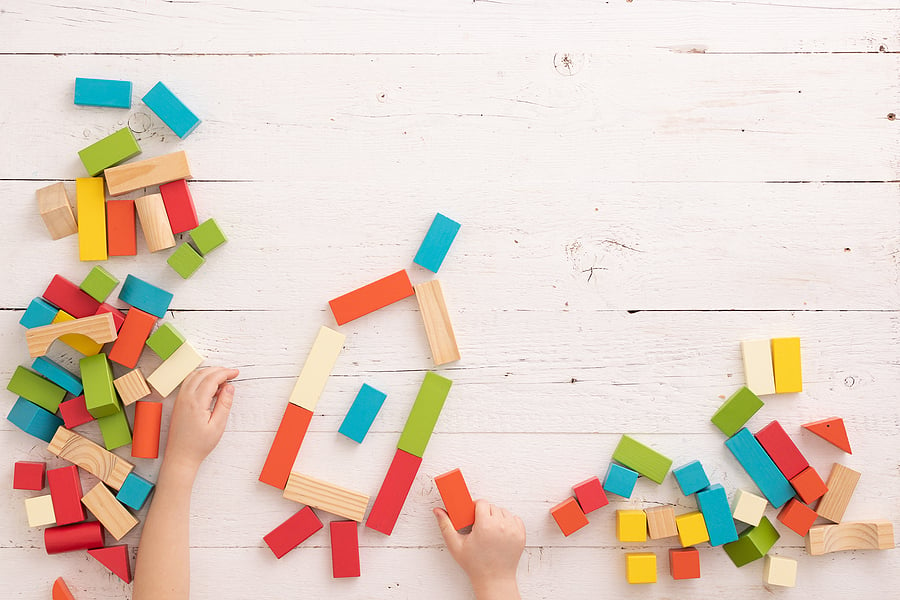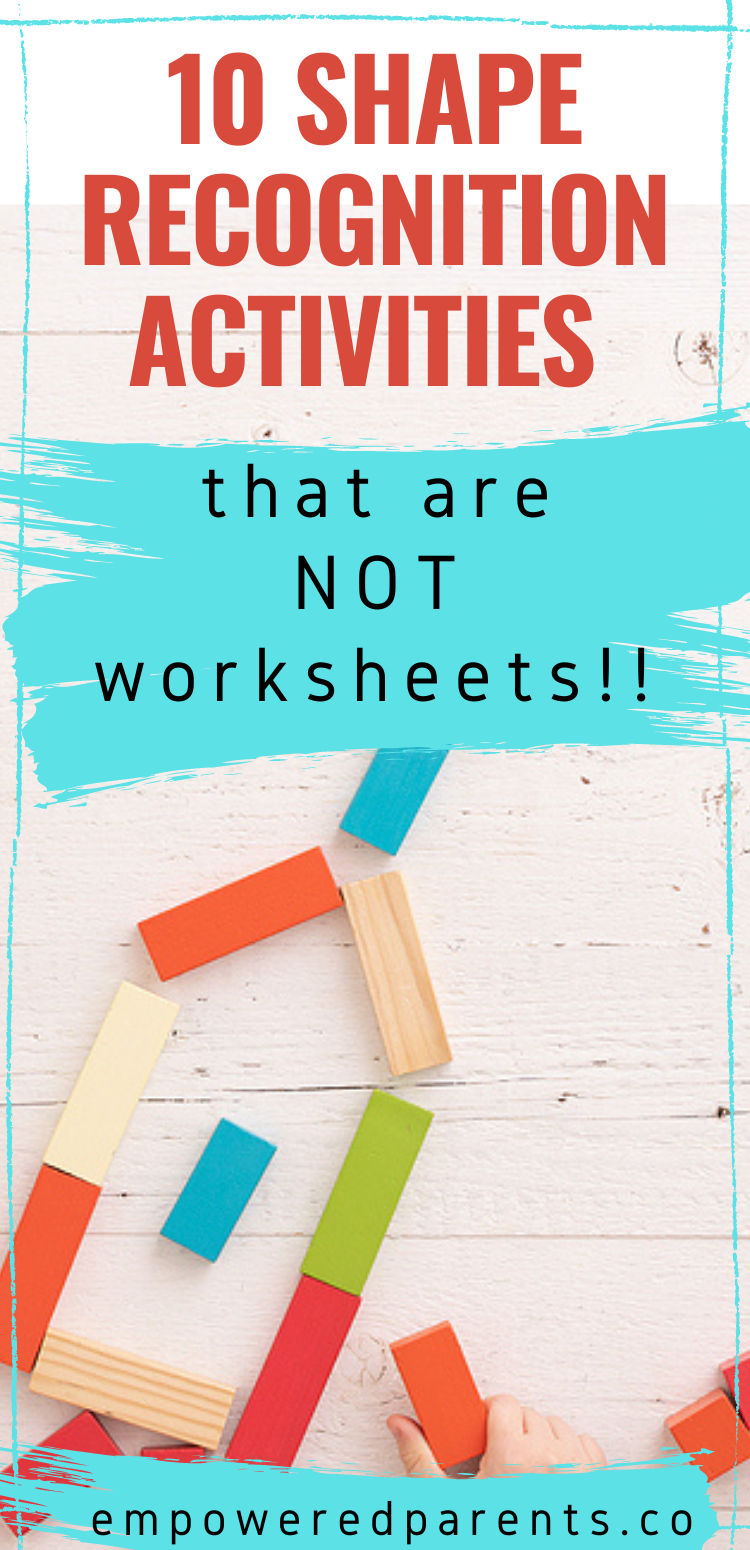Teaching children about shapes and their properties should be a fun, hands-on experience.
Shape recognition is about more than just being able to spot the basic shapes. It’s important for building early maths skills and visual perception (for reading).
Letters are made up of shapes and children need to learn to distinguish, recognize and remember the specific shapes in order to read fluently. Shapes are the first ‘symbols’ children learn to interpret. [source]

While teaching children about shapes, make sure to use vocabulary such as:
- Straight lines or curvy lines
- Sides and surfaces
- Size – bigger, smaller, longer, etc.
- Round, pointy
- 2-dimensional, 3-dimensional
- The names of shapes – oval, rectangle, triangular prism
Here are 10 simple shape activities to try at home or school:
1. Shape Sorting
Sorting is an important mental concept and it’s easy to do with shapes.
Provide a container of shapes – cutouts, wooden or plastic shapes – and get kids to sort them according to different criteria.
Here are some examples:
- Shapes with straight edges vs shapes with curved edges
- Shapes with 3 sides and shapes with 4 sides
- Shapes with corners and shapes without corners
- 2D vs 3D shapes
Here are more fun sorting activities for preschoolers.
2. Body Shapes
Play a movement game with shapes. Say the name of a shape and ask children to make the shape with their bodies.
Get them to straighten up into a tall rectangle, puff their arms out to the side to make themselves round, stand with legs far apart and arms pointed above you to make a triangle, etc.
Before you show or help with ideas, see if the kids can figure out on their own how to make these shapes. They may think outside the box and find new ways to make the shapes.
3. Block and Ball Play
Children need regular exposure to shapes by playing with blocks, balls and other toys during their free play time.
This is an activity that doesn’t need much regulation by an adult but is as important as planned shapes activities.
4. Playdough Shapes
Give kids playdough and shape cutters and let them explore different shapes this way.
Make a batch of easy homemade playdough and this will keep kids occupied for hours.
If you don’t have cutters in the form of shapes, then improvise with tins (round), plastic containers (square and rectangle), etc.

5. Yummy Shapes
For a tastier version of the above activity – that will leave a bigger imprint on kids’ memory – make shapes out of cookie dough and then eat them after!
6. Find the Shapes
Show children an example of a simple shape, such as a circle, and challenge them to find as many items as they can around them that have the same shape. (Here are more shape games to try).
They could also draw pictures of all the things they can think of that have a circle shape.
This teaches kids that shapes are part of their world.
7. Build With Shapes
If you have plastic or wooden shapes that are relatively flat, let kids ‘build’ pictures out of them using the shapes.

They could construct a house or a person, for example, by learning to use the shapes to substitute the various parts they need.
These shapes can also be made out of cardboard.
8. Feel the Shape
Use the same shapes from the activity above to do a sensory activity.
Blindfold a child, then give him a shape or ask him to pick a shape out of a bag. He must describe the shape (it is round and has no straight edges), then say what the shape is.
If he guesses right, he can keep the shape. If not, it goes back into the bag. This can be turned into a game to see how many shapes each person can accumulate.
9. Shape Stamping
Provide poster paints on trays and get kids to stamp shapes onto them.
Use blocks for these shapes or make potato prints, sponge shapes, etc. Use your imagination.
10. Shape Pictures
A fun art activity, this can be attempted after children have had ample opportunity to make shape pictures out of real shapes.
Provide lots of pre-cut paper shapes in various colours, white paper and glue.
Get kids to make their own shape pictures. Let them use their creativity and do not try to guide their creations.
Definitely don’t give them a model to copy! This should be a form of process art, where the learning is in the doing, not the final product.
If you are looking for more creative art ideas, try these shape crafts for preschoolers.
Sources:
“Learning Through Play: A parent’s guide to the first five years”, written by Jan Natanson.
“Language and School Readiness”, written by Martie Pieterse.

